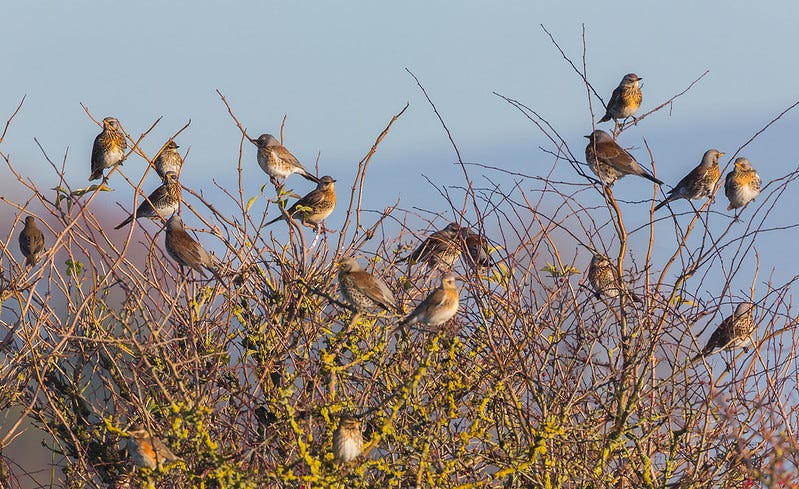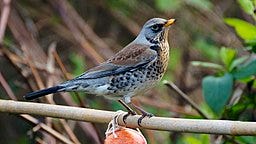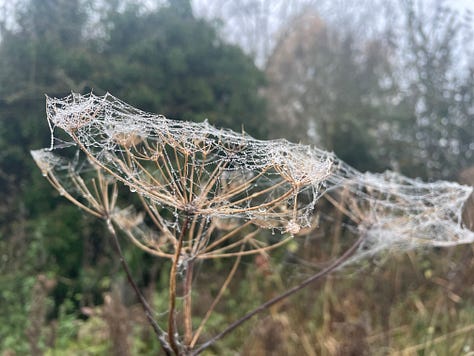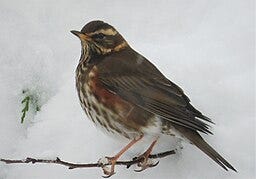Fieldfares and Redwings

November sees the arrival of winter thrushes in the UK; darting groups of fieldfares and redwings that catch my eye as I drive along the quieter roads of West Oxfordshire. The redwing is the smaller of the two and the more obviously striking, with underwings that flash russet-red as it flies and a glamorous sweep of white across its brow. With its bold brown chest speckles, the fieldfare is more like its British cousins in appearance, although dark eye shadow and grey head plumage also give it a somewhat incongruous air. The fieldfares and redwings come to us from Iceland, Russia and Scandinavia and animate our hedges and bare farmland with their aeronautic displays. Unlike song thrushes and mistles, they are sociable creatures who delight in flocking together, often in mixed groups so that the impression is of a small, fast-moving cloud stippled grey and red.
As I searched for information about these characters I was struck by one key fact. They are migratory creatures, seeking southerly climes when their environments become cold and inhospitable, but there are a few – a very few – birds that stay here all year round. The numbers are tiny. In the report created by the RSBP’s Rare Breeding Birds Panel for 2021, there were somewhere between four and 21 breeding pairs of redwing identified, mostly nesting in the Scottish Highlands. There are just two possible pairs of fieldfare. As the Panel note elsewhere, ‘the Fieldfare has never been more than a very rare breeder in the UK’ and the global population of these thrushes is considered to be stable, but numbers nesting here are still down on previous decades.



It got me wondering about those British summering fieldfares and redwings. I can’t help but fixate on the one fieldfare couple spotted in Kent. What on earth is their experience of daily life? Do they feel isolated, alone, or are they happily integrated with the local song thrush population. And what is it like when the hoards of tourists arrive from the north, bringing their chattering gossip of faraway places?
It's clear I need some lessons in ornithology to really get to grips with these questions, but in the meantime, imagination prevails.
The attribution of human sentiments and behaviours to birds is not always useful in understanding the realities of the natural world, but anthropomorphism is one of the great delights of storytelling. Pick a rare bird or mammal and write its story in the form of ‘a day in the life…’. What difference does it make if the creature is aware of its scarcity? How does it interact with other animals around it that are more numerous and secure?
There is much fun to be had in the Rare Breeding Birds Panel’s report on Non-native breeding birds in the UK, 2015-20 (honestly). I love browsing the names of some of these species: the red-crested pochard, the ruddy duck, and Lady Amherst’s pheasant leap out at me. Pick your favourite bird names and create some characters based on these as a starting point for a story or poem.
Think of a moment when you have moved from solitude into company – perhaps the quiet of a morning’s cup of tea interrupted by hungry children, stepping out of your car into the chaos of a shopping centre, or turning a corner on a walk to encounter a large group of ramblers. Write a short piece of prose or poetry capturing this moment of transition. You might like to use animal imagery to bring it to life in fresh ways




